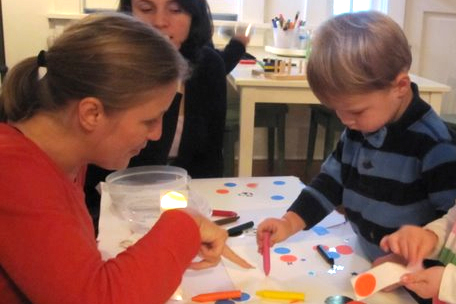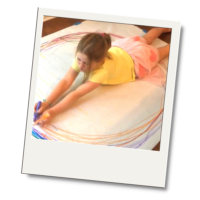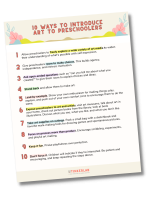 In the world of education, sage on the stage is a phrase that’s sometimes used to describe the all-too-familiar scene of the knowledgable teacher delivering lectures to passive students who memorize information for the sake of spitting it back out again on testing day. This method of teaching assumes that the child is an empty vessel, waiting to be filled with information, and doesn’t give the child much opportunity to think for themselves. As you can probably imagine, the problem with this type of instruction is that while the learner may appear to “know” information, he or she doesn’t really learn all that much.
In the world of education, sage on the stage is a phrase that’s sometimes used to describe the all-too-familiar scene of the knowledgable teacher delivering lectures to passive students who memorize information for the sake of spitting it back out again on testing day. This method of teaching assumes that the child is an empty vessel, waiting to be filled with information, and doesn’t give the child much opportunity to think for themselves. As you can probably imagine, the problem with this type of instruction is that while the learner may appear to “know” information, he or she doesn’t really learn all that much.
In order to really understand something, humans need the motivation to generate knowledge and meaning through their own experiences, rather than regurgitate information that’s been fed to them. Back to the world of education, this active form of learning is often referred to as constructivism, a learning theory supported by instructors (or parents) who act as facilitators rather than teachers. You’ll know a constructivist environment when you see discussion, analysis, prediction, problem solving and posing, active learners, and facilitators who ask open-ended questions.
Huh? But I’m a parent, not a teacher!
Right! But there’s a world of research on how constructivist learning environments can foster creative thinking skills, skills that are critical for children to embody in order to thrive in this ever-changing world, and we have the perfect opportunity to steal some good ideas from the world of education and put them to work in our own homes.
Putting it into action
- Take a step back. If you find yourself on the “teaching soapbox,” find opportunities to be the guide on the side, rather than the sage on the stage.
- Be an active listener. Listen to your child, and respond to what they’re interested in. If they aren’t yet talking, follow their gaze and respond with descriptive dialogue about the object/s they’re looking at. For example, “I see you’re looking at the big, red ball. Would you like me to bring it to you? What do you think about it? Oh, you’re feeling it. It’s soft, isn’t it?”
- Ask open-ended questions such as “tell me about this picture,” “what do you think will happen now?” or “I wonder what we could make with this play dough?” This will empower your child to think independently, come up with novel conclusions, and express his or her ideas.
- Follow their lead. If your child takes an interest in the birds outside the window, paint a birdhouse together, watch videos of different kinds of birds singing on YouTube, buy a bag of birdseed to feed some birds, make bird noises together, find books about birds at the library, etc.
References:
Jacqueline G. Brooks and Martin G. Brooks, In Search of Understanding: The Case for Constructivist Classrooms (Alexandria, VA: Association for Supervision and Curriculum Development, 1999)
Alison King, From Sage on the Stage to Guide on the Side. 1993. College Teaching. v41 no1 p30-35.




teaching soap box! you have to pry me off that thing. just today I was thinking to myself, “it’s astounding how every moment is a teaching opportunity. a directive. a “where do you plan on going with that slug?” moment. it’s absolutely exhausting, hysterical, noisey ( so sick of hearing my voice, “that’s not where your dirt pile belongs. Where would be a better place.” and it’s amazing how the answer is always correct. “over by the sand box:)” )
But you are absolutely right Rachelle. and it’s a great way to bond with your child-to play their idea out.
Good thoughts!! “Where do you plan on going with that slug?” is a great question, and wouldn’t “put that slug back down in the dirt!” be a lot harsher on the ears of a child? And your other question, “Where would be a better place?” encourages your child to think for themselves, and is far more engaging than telling them where you want them to put it. I love it!
And I should definitely add that teaching moments aren’t all bad, and are often completely necessary. Along the path of learning, kids also need to learn about the rules of the game. I’m not encouraging laissez faire parenting, and think it’s absolutely important to help children make choices within parameters. Isn’t that what life is all about for adults after all?